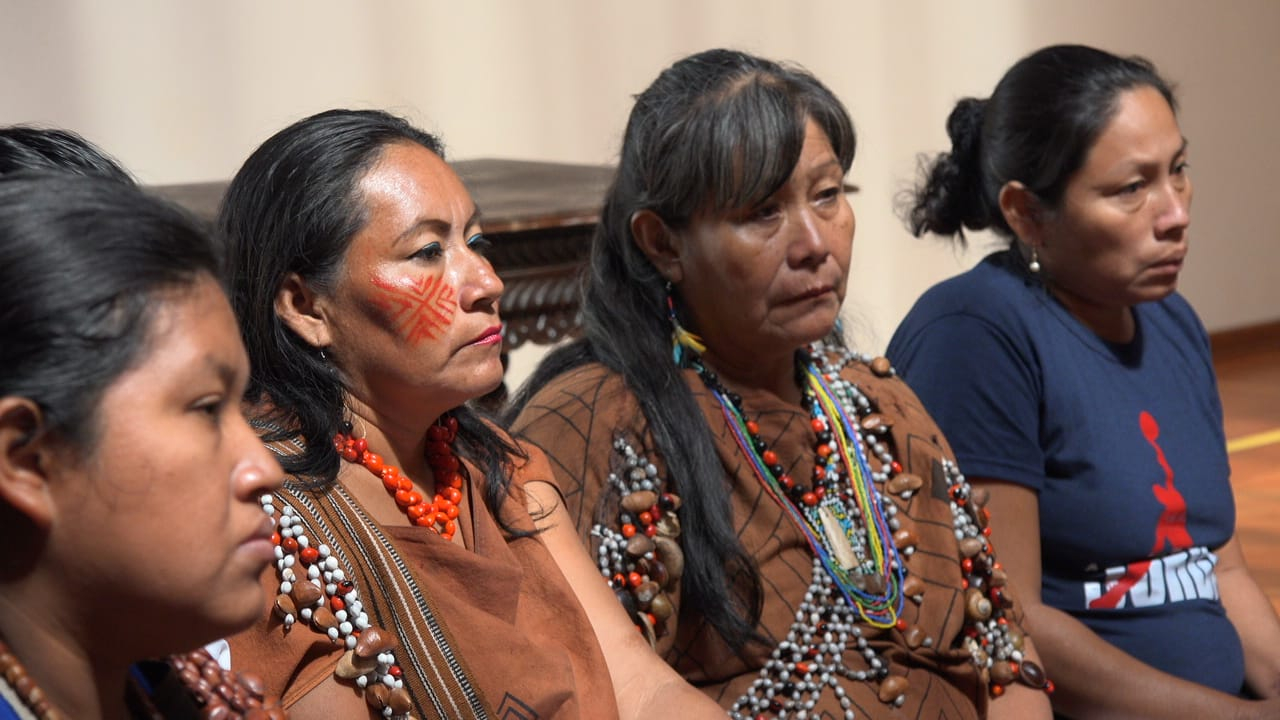
The promotion of self-protection mechanisms to face terrorism and the advance of illegal activities cost the life of the historic Asháninka leader Santiago Contoricón, according to the Central Ashaninka del Río Tambo – CART. The blocking of the access roads in his native Puerto Ocopa, in the Río Tambo-Satipo district, was a response to the inaction on the part of the State to protect environmental leaders.
Two weeks before this assassination, Asháninka leaders presented their situation to representatives of the Ministry of Culture, the Presidency of the Council of Ministers and even the President of the Republic herself. Despite this and to date, the only concrete action that is known is that the Junín Specialized Prosecutor for Human Rights and Interculturality has initiated investigations. In mid-February, the Judiciary sentenced the emblematic case of Saweto where 4 indigenous leaders were murdered, including Edwin Chota, perhaps one of the few cases that has achieved a sentence, but with 8 years of trial behind it. Something that these types of cases share is the high degree of impunity.
Although for 2 years we have had an intersectoral mechanism for the attention of defenders with the participation of eight ministries -and with the objectives of prevention, protection and access to justice- there is still not a complete multisectoral involvement, nor is it enough the follow-up plan for the care measures provided. Much more political will is needed to translate into funds to deal with this national emergency. In addition, this instrument should be able to articulate with the indigenous defense and self-protection protocols that are based on their worldview, spirituality and local knowledge about the territory and forests, that is, build bridges between what the State can do and what it can do. carried out by indigenous peoples for their protection.
Another key element is to strengthen the State’s strategy against the mafias of the illegal economy. According to OF LIFE, between 2020 and 2021, the Tambo river district almost doubled the hectares of illegal crops, reaching 40% of the area with this type of crops at the country level. Faced with this situation, indigenous peoples are committed to territorial control, which, in many cases, they carry out together with the authorities in seizure actions. It is necessary to formalize these procedures and link them to the national system so that the information provided by indigenous peoples can activate effective prevention and control actions. In addition, it is important to strengthen the role of local authorities and provide them with powers so that their alerts do not accumulate files, but instead generate concrete actions; as well as the prefectures and justices of the peace who collect first-hand information, but which remains forgotten. The State cannot indicate that it is unaware of the threats to the defenders, since they arrive daily in official letters and different communications.
For this reason, given the lack of trust in justice, territorial defense among indigenous peoples has been changing, based on the right to autonomy and self-determination. A first element of this strategy is advocacy to achieve territorial security, another element is the strengthening of indigenous governance or self-government to manage their territories. A third element is territorial control and self-protection actions, and a fourth is being able to declare the situation of defenders in an emergency on a multilevel scale accompanied by economic alternatives and access to services.
What has been described reminds us that Peru has not only national but also regional challenges, such as the ratification of the Escazú Agreement, which has specific provisions on the protection of environmental defenders. Recently the Inter-American Court of Human Rights (IACHR) issued a judgment in the case of an environmental defender convicted of insults in Chile. This sentence is of the utmost importance since it incorporates the Escazú Agreement into its considerations, mentioning that Article 9 establishes the obligation of the States parties to guarantee “a safe and favorable environment” so that environmental defenders “can act without threats , restrictions and insecurity”. It also establishes that States must take “adequate and effective measures to recognize, protect and promote” all their rights, including the rights to life, personal integrity, freedom of opinion and expression. Thus, ratifying the Escazú Agreement is essential for our country as it is a human rights treaty, especially since it would help raise our standards of access to justice. Likewise, in Peru there are some legislative initiatives that are being built by a few congressmen or from the Ombudsman’s Office, it is hoped that they can promote the improvement of institutional mechanisms and strengthen the initiatives of indigenous peoples. The State’s response is slow, but we must remember that life, without the defenders, who defend our forests from threats and degradation, will not be the future we want. The assassination of leaders must not go unpunished, therefore, it is increasingly urgent to ratify the State’s commitment to the protection and defense of human rights.
Diego Saavedra Celestino and Aída Gamboa Balbín
Law, Environment and Natural Resources (DAR)
[CONTENIDO PATROCINADO]
Source: Larepublica
Alia is a professional author and journalist, working at 247 news agency. She writes on various topics from economy news to general interest pieces, providing readers with relevant and informative content. With years of experience, she brings a unique perspective and in-depth analysis to her work.











